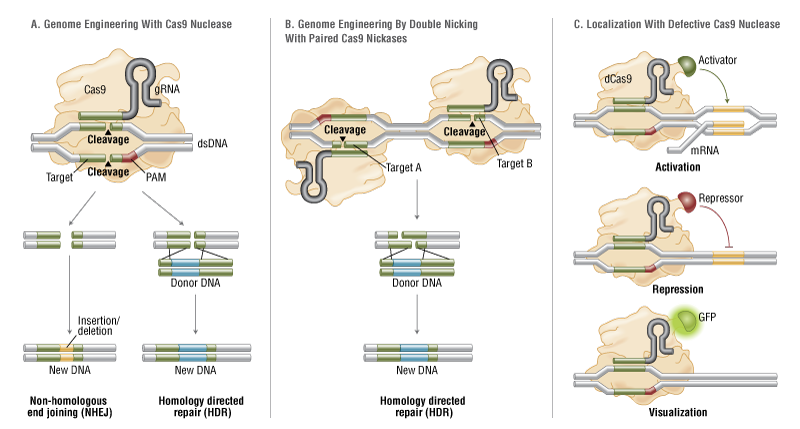By Elisabeth Alter, The New York Times, November 10, 2015
THERE are four locked doors guarding a specialized lab at the Harvard School of Public Health. The doors are meant to prevent insects inside the lab from venturing out — which is essential, because researchers behind those doors are re-engineering mosquitoes by cutting and pasting bits of DNA with tools unimaginable a decade ago.
If researchers can figure out the right combination of genes, they’ll manufacture a mosquito resistant to malaria, which could save hundreds of thousands of lives every year. But geneticists, bioethicists and others who understand the implications of this new technology are apprehensive. To an astonishing degree, these new tools, which include a technique called Crispr-Cas9, allow us to bend evolution to our will. But will we harness these new technologies to help our planet? Or spark an ecological catastrophe?
In university labs, corporate R&D centers and even inside amateur D.I.Y. laboratories, researchers are creating genetically modified organisms at an unprecedented pace. This biotechnological revolution is so fast-moving that it hasn’t yet fully filtered into the public’s awareness or policy makers’ oversight. The implications of Crispr are now intensely debated by medical researchers, especially since Chinese scientists used the method earlier this year to modify human embryos. But there are few similar conversations about the implications of these technologies for ecosystems, even though those impacts will most likely be more transformative for our planet’s future.
These new tools are much more precise and easy to use than past versions. Researchers can cut and paste DNA into just about any animal, plant or fungus. Whereas modified genes were once likely to be stamped out if by chance they made it into the wild, today’s technologies can supercharge a genetic chain reaction: A technique called “gene drive” ensures a modified gene will be inherited with nearly 100 percent success. This is valuable in making sure that a desirable new gene, like one resistant to the malaria parasite, spreads once introduced into a mosquito population. It also means a mistake can’t easily be taken back.
As scientists, policy makers and citizens, we need to start debating how much genetic tinkering we should allow in the wild and what regulations need to be in place. On the one hand, these new tools could help us cope with many risks to humans and animals, including climate change. Coral could be buffered against warming ocean water through the introduction of heat-tolerant genes. Genes from successful species could be used to help rescue imperiled ones. The method could be used as a form of molecular CPR, helping species adjust to our changed planet more quickly than they could on their own.
But the ecological risks of these manipulations are real and poorly understood. We can’t fully predict the consequences of releasing self-propagating genes into the wild.
Encoding a self-destruct gene, for example by altering sex-determining genes so the population eventually ends up entirely male, could be a way to battle invasive species like zebra mussels or coral-destroying sea stars. But such genes could potentially leak to places where these species actually play important ecological roles — and could even jump to other species through interbreeding. Re-engineered genes that escape from crop weeds and spread as a result of gene drive could devastate other ecosystems. Moreover, our understanding of how genomes function is still far from the point where we can change genes and be certain we aren’t creating bigger unintended consequences.
First, we need to clarify who has jurisdiction over gene-editing projects. Our current system is inadequate and confusing. A transgenic mosquito release in Florida by the company Oxitec is being evaluated by the Food and Drug Administration; a similar proposal for a moth release in New York is being overseen by the Department of Agriculture. Agencies vary widely in their review processes, and the current uncertainty about who’s in charge means that some ventures can fall through the cracks. The White House needs to issue clear guidelines.
Second, we need to pay for studies that explore the potential impacts of these technologies on the environment. Right now, there’s little incentive to explore the risks. The National Academies of Sciences, Engineering and Medicine and other groups evaluating those risks have virtually no data to work with. A recent report by the Wilson Center notes that from 2008 to 14, less than 1 percent of synthetic biology funding went toward risk research in the United States, lower than in other emerging technologies. Foundations that are investing mightily in gene-editing technologies should commit to footing some of the bill for research on the environmental risks.
And finally, we need to encourage a public conversation about these technologies. At the end of the day, the escape of a few Harvard mosquitoes will not be the most pressing problem our ecosystems will face. But to confront the big challenges, we’ll need an informed and educated public, sophisticated oversight and a broad conversation about what kinds of advances and risks we want to embrace. We need protections that are stronger than multiple doors.
Elizabeth Alter is an assistant professor of biology at City University of New York, York College.

No comments:
Post a Comment